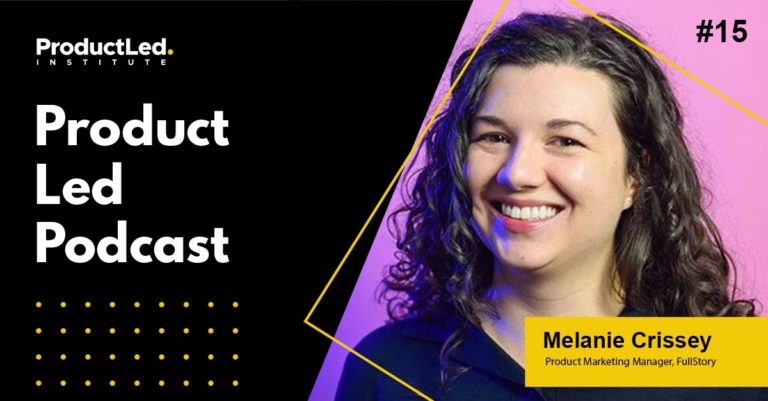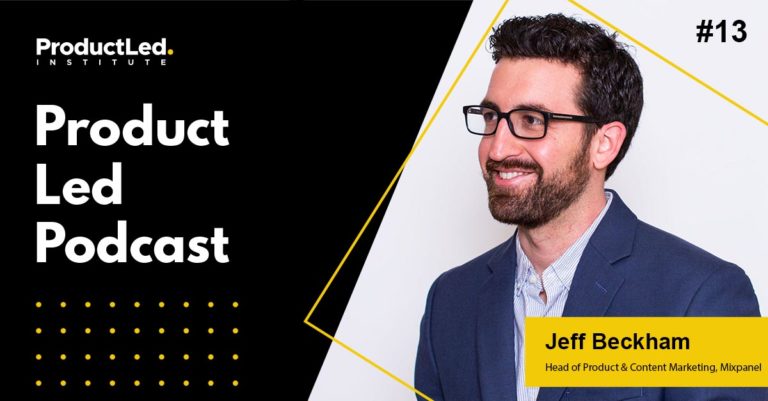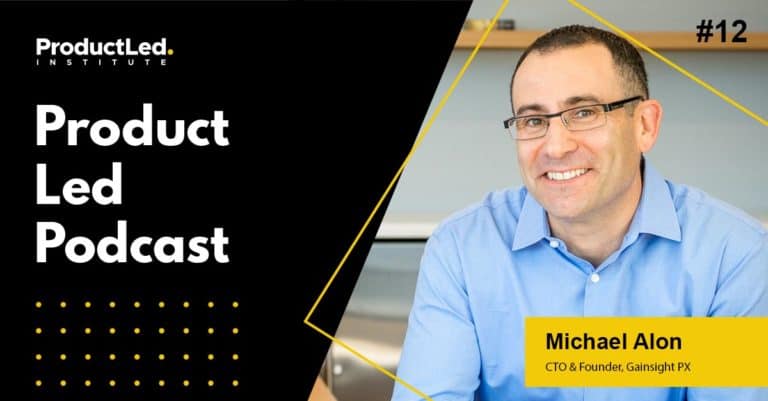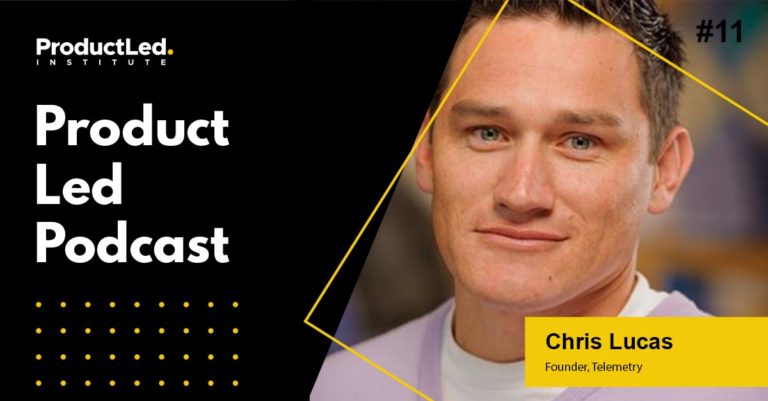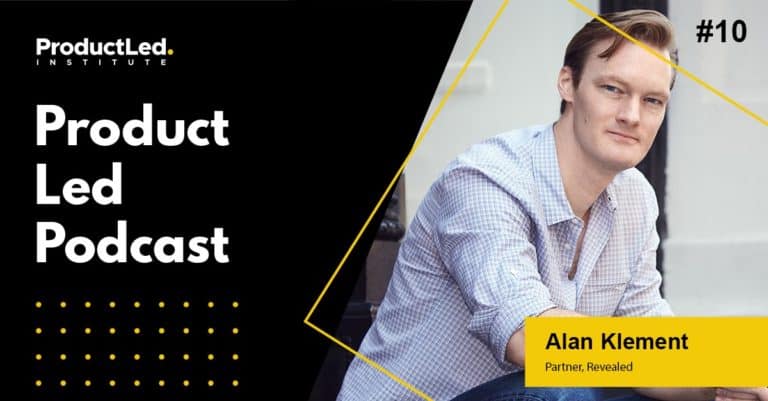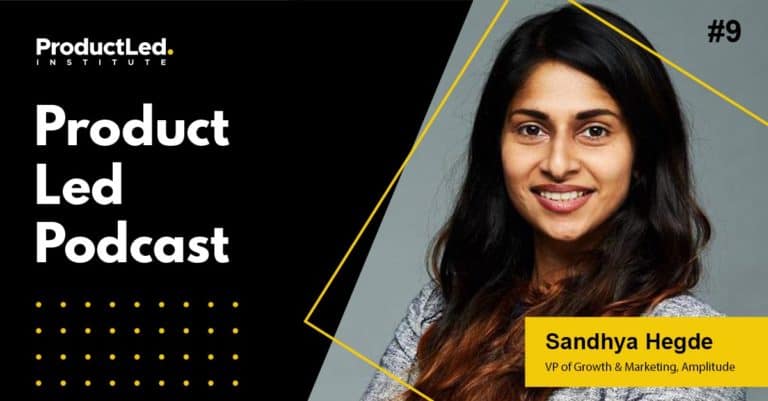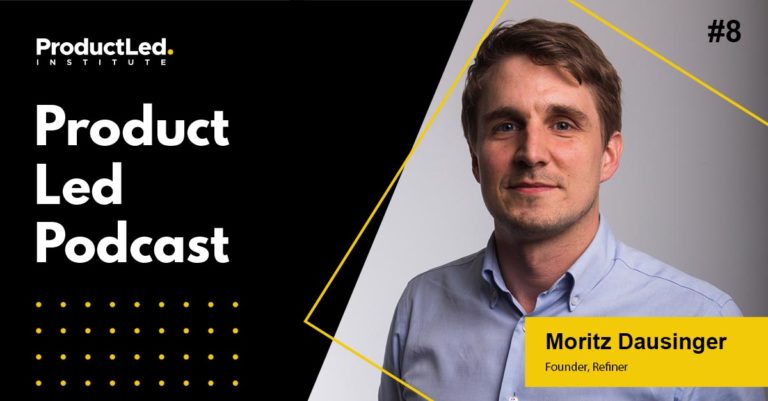Moving from a sales-led growth (SLG) strategy to product-led growth (PLG) can feel daunting, as there are so many unknowns when a company decides to make the switch. In this article, I share the journey of Lumavate and how we made the transition.
Specifically, I’ll dig into what transitioning to a product-led organization really means by covering these facets:
- Challenges
- Tech Stack
- Operations
- Marketing
Lumavate is a SaaS company that helps marketers build apps without code. We've been around for about five years, and we started as a sales-driven company. About two years ago, we decided to shift our business model to product-led.
At first, everyone was very nervous about the shift and had so many questions:
- What's the value of it?
- How we think about the approach?
- Who else has done it this way?
We started to invest in product-led implementation as part of our planning cycle for 2020. It was a massive opportunity for the business, and the goal was to launch it in early 2021.
Then COVID hit.
This accelerated our timeline dramatically, and we launched our product-led model in November of 2020.
Challenges
Here are some of the biggest challenges we faced when implementing a product-led growth model. Hopefully, our journey can help future companies navigate these obstacles.
#1. Loss of Control
We had to completely change our company to make the transition to a product-led organization quickly. For us, the biggest challenge was losing control. With sales-led you have control over a lot of things like:
- Who you target and when.
- The messaging they receive.
- What the user sees in your product and when they see it.
- When Pricing is shared and in what context.
This control is not just from a marketing and sales perspective; it’s also from a customer success perspective. For example, a majority of our customers before shifting to product-led would be trained on our platform by going through a hands-on training with one of our customer success team members and learning about how to use the platform for their specific use cases. This approach was highly tailored to their needs.
Moving to product-led, most companies are looking at:
- Product changes.
- Operational changes.
- Customer success changes.
- Culture changes
Before product-led, you could control when potential customers see your product and the story they hear around it. With a product-led approach, you have customers creating a free account at 10 p.m. on a Friday and making a decision about your product from that experience in 10-15 minutes if you’re lucky.
For companies accustomed to having control, it's hard to understand what that means. For instance, we put help content – represented with help icons – throughout our platform to make it easier for our users to access help content relevant to where they are in our product, but this still requires them to take an action.
But a user who comes in may never click on a help icon, meaning they may never watch the videos embedded in the product. So how do you ensure the user experience is delightful when users don’t follow the behavior paths you’ve created for them?
As much as we want users to read the instructions or watch the video, users tend to click around to figure it out on their own.
We lost control – we weren’t introducing them to our product anymore, which meant we had to be ready to answer specific questions.
The flip side is that users who have used your product and started talking to the sales team are higher-quality leads, which means you now can move them through the funnel faster.
#2. How Product-Led Changes Your Product
Many companies don't realize that users will find different use-cases for your product than you could have even imagined. Even if you've had a successful product before the switch to product-led, it can be a big shock. For us, we learned a lot about how users would want to utilize our product when someone isn’t telling them what to do with it. These insights drove a ton of iteration in our product that ultimately made it better for all users.
For example, we previously had two-factor authentication turned on for all users. While this wasn’t an issue for customers we took through our customized training process, it was an unexpected stumbling block when we launched our free account process. After the switch to PLG, we saw users drop off at the authentication request which was a behavior we had never seen before. We realized our new users were now thinking: " What is the Google Authenticator app? Why do I need to authenticate?" and were oftentimes stopped trying to login to our product.
As you move to become product-led, you’ll begin to identify these problem areas. Some are easy to fix, while others are more complicated and take time to figure out.
The ultimate takeaway is that your product will be much different in six months to a year, which ultimately affects the predictability of user behavior.
#3. Adapting to User Behavior
If you're going to become a product-led organization, you have to deliver a lot quicker than before. So when people think about product-led growth, they look for a way to capture more leads and signups. In the direct sales model, a visitor schedules a demo.
However, if you've ever looked at the intent or IP-driven data for your website, many more users visit your website who never request a demo.
Why?
Because they know they will get caught by sales. Depending on your model, a user may receive called within five minutes of requesting a demo.
The product-led model is different. Visitors who try out a product are typically creators and notorious for checking out the software at 10:00 PM on their laptops in front of the TV. I do this myself.
That behavior is different. I don’t want someone to call me. I want to figure out if this is a worthwhile product, and I want to succeed by myself. Most likely, I’ll make a decision within 10 to 15 minutes. These users don’t want to talk to a sales team. They want to upgrade via credit card and start using your product right now.
How User Engagement Changes
As your product changes with users’ needs, so does how they engage with information.
I'll give you a straightforward example.
We sent an email to all of our users, including a video explaining our new release. This same video also was placed in an in-product navigation. So the next time a user logged in, the video appeared.
More people watched the video inside the product than they did in the email. What was fascinating to us was that users spent two and a half minutes on this release prompt. This told us that people would watch it if it's the right type of video. So next time we’re building a new feature, we should include an explanatory video instead of text.
We’ve seen factors that once blocked or drove certain behaviors are no longer an issue because of changes we’ve made.
Tech Stack
If you wait until you have everything to launch your product-led organization, you will never launch it. So initially, we launched with the ability to track every account’s behavior manually to understand what users did and didn’t do.
We tried to be smart about investing too much time in implementing new tech and focused more on the user experience to make it as fluid as possible.
In the beginning, we were looking at 40 or 50 accounts that came to us organically. So it was manageable to pull the data sets manually. But when the numbers started growing, it wasn’t scalable to continue to pull the data manually. So we began to explore what we could automate.
Currently, we use:
- Sumo Logic: An excellent app for collating login data to see how many times users log in, what Starter Kits they use, etc.
- Pendo: Provides additional data on our platform usage: how people use it, what pages they spend time on, and what they’re clicking. Its aggregate data is pulled from our entire customer base, as opposed to individual data.
- Google Sheets: All the above data is pulled into Google Sheets with additional manually inputted data.
- Salesforce: For our Customer Relationship Management (CRM).
- Pardot: For all our email automation.
- Google Analytics: To understand what pages users spend the most time on and track behaviors.
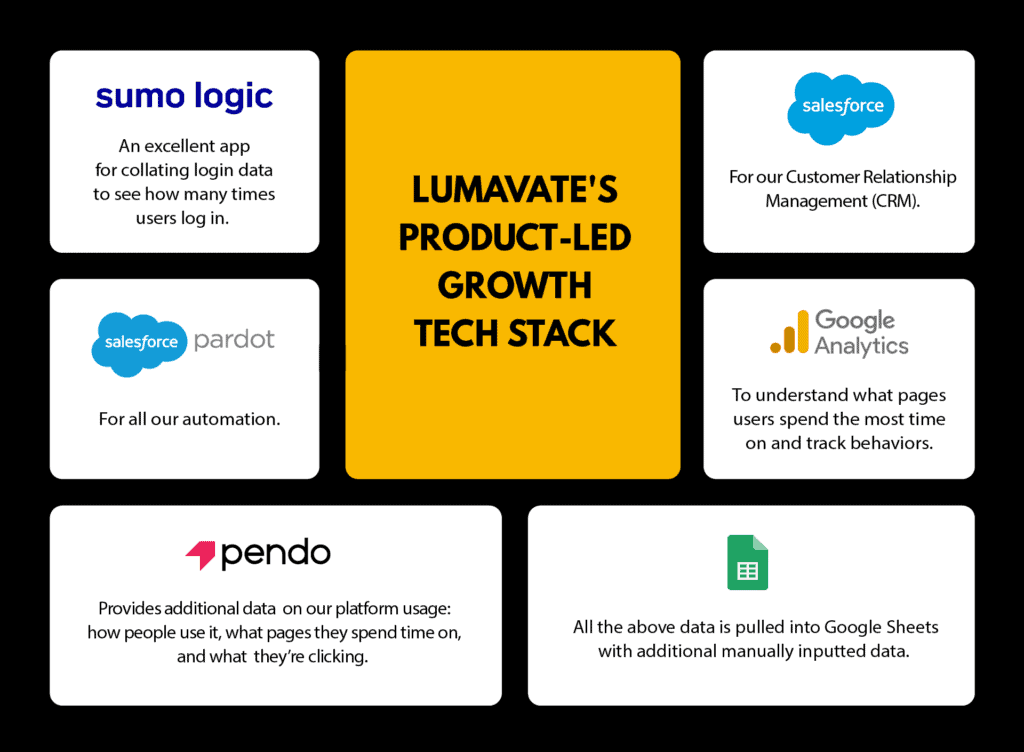
Operations
You can never assume that what drove conversions in March will be the same in November, especially if you evolve a product at the rate needed to engage your base.
This need to constantly evolve with your user’s needs means quarterly releases are not frequent enough for a product-led model. Instead, it’s best to have the data released weekly or biweekly and communicate it to your teams.
Use the data to ideate your next steps to ensure things work while you are doing them. Waiting until you are done to find out what isn’t working delays your response time and means you can’t adapt your approach to users’ needs.
This is similar to e-commerce which is hyper-focused on behavior patterns such as:
- What did you click?
- How’d you get your cart?
- How long was it in your cart?
- What else did you do?
They're focused on daily metrics:
- How many users are coming to the site?
- What does daily revenue look like?
Like e-commerce, we found that the cumulative effect of daily improvements helped us get the data we needed for the marketing process.
This data showed us that we had to make operational changes that worked with the product-led growth model to keep our visitors from dropping off.
Some of the key operational changes for us were:
- Switch invoicing with automatic billing linked to a credit card.
- Focus on Monthly Recurring Revenue (MRR) instead of Annual Recurring Revenue (ARR).
- Create the “Aha! Moment” for someone on their couch at 10:00 PM versus the user who was shown specific parts of the platform.
- Focus on user interaction with the Customer Success team versus Sales. We found that when people feel like they’re not being “sold to,” it opens the gate to our sales team to finish the sale.
Marketing
The idea of a Market Qualifying Lead (MQL) doesn’t work for a product-led organization. Just because a user visits your website and creates an account doesn’t mean they’re interested in buying your product.
The marketing funnel for product-led organizations is different than for sales-led.
It’s about qualified opportunities because qualified opportunities mean that it's an account with the right person who has a budget and wants to buy a solution like ours.
User Types
Direct sales and product-led users are different. To understand user behavior and what engages your users, it’s helpful to identify and break down their behavior patterns.
At Lumavate, we’ve identified three user types who typically log into our platform.
- The Curious User. According to HubSpot, 2 to 5% of product accounts from a free account will typically convert, which means more than 90% don't. Part of that is because of curiosity. They’ve heard about it somehow, so they log in once to satisfy their curiosity and never return.
- The Purposeful User. They know precisely what they're going to use your product for; they have a use case, are looking for that type of solution, and are truly evaluating the product.
- The Investigative User. Determining the best way to solve their problem. They take your product and test its functionality. Typically, they want to do more than one thing with your product. You see this a lot with marketers.
For us, we started to bucket every user into one of these three buckets.
Calendly is a great example of a platform that normally brings one of these three users. When I first tried Calendly, I didn't invite my whole team to it. I looked at it. I set up my account. I didn't even schedule a meeting. I saw how the preview works and upgraded it in 10 minutes.
But other users behave differently. Other users might test its functionality, setup, or user permissions. They might be evaluating ten other providers and never connect a single calendar to any of them until they narrow down the ones they want to work with. That could be three months down the line.
Here is when that weekly or bi-weekly user data becomes essential by evaluating:
- The kind of user they are.
- Where they are in their customer journey.
We learned that when you see users dropping off, take a look at your pricing page.
Most users check out the pricing before signing up for a free account. So make sure it’s accessible in the initial onboarding process, and build links from the pricing page to create an account.
Marketing Strategies
Sales-led marketing is very account-focused. Typically you run detailed campaigns with paid media strategies, direct mail strategies, etc.
None of that works with a product-led organization. Why?
Because the people you reach out to for a meeting are senior decision-makers who don't create free accounts. The people who create free accounts do it differently; they don't want to book a meeting.
The best marketing strategies for product-led organizations have been:
- SEO
- Spotify Ads
- Paid Search
Let’s look at each of them.
SEO
SEO is the hardest to explain to senior leaders because everyone expects instantaneous results. With SEO, you see results in six to nine months. There's nothing you can do.
To see the benefits of SEO, you need to devote time every single week to it.
Spotify Ads
For product-led growth, my number one hack right now is to start with Spotify audio ads for $250. The targeting is a little all over the place as you can't target specific shows, but you can target specific interest areas.
It’s a lower Cost Per Ad (CPA) than LinkedIn, and it’s been way more effective.
Paid Search
While we've always done Paid Search, we recognize it’s not a long-term model. Since launching our product-led implementation plan, we've invested in paid search.
While SEO is a long-term, cost-effective model, paid search is helpful for conversion rates. Because when someone comes to our page, they aren’t ready to talk to someone in sales yet. They can create an account and see if it meets their needs.
It helps users go in different areas of your funnel, which helps provide a clearer picture of what your funnel looks like in the product-led model and across the entire market. In turn, it enables you to refine your marketing strategies.
Top 3 Tips for Transitioning to a Product-Led Organization
Transitioning to a product-led organization can feel overwhelming. So here are my top three recommendations to consider before getting started.
#1. Talk to Someone Who’s Done It Before
Reach out to someone who's done it because they will help you troubleshoot unforeseen issues and avoid some of their mistakes.
For example, something as simple as, "Did you take credit card payments before?" There are so many things to consider, such as:
- Fields you collect
- Process flows
- Organizational structure
- Sales team
Talking to someone who has “been there” will help you avoid many time-sucking mistakes.
#2. Get Everyone Onboard
Shifting from sales-led to a product-led organization will be the most successful if all teams within the company are on board.
The misconception people have sometimes is they think sales aren’t needed. Sales are still very important; it’s how they interact with users that are different.
#3. Prepare For a Loss of Control
If you're leading the sales marketing or the product teams, you've got to make sure they understand that “we will lose control.”
Your team will need to collaborate, respond, and adapt faster than before, which is the biggest cultural shift in companies transitioning to product-led.
Give your team a lot of notice and repeat yourself on these topics s a lot.
While making the move from sales-led to product-led has the power to open up different marketing segments and even evolve your product in ways you could have never imagined, it can feel daunting to start. For most companies, the biggest obstacle is shifting a team’s mindset from feeling overwhelmed to excited about long-term growth and discovery.

